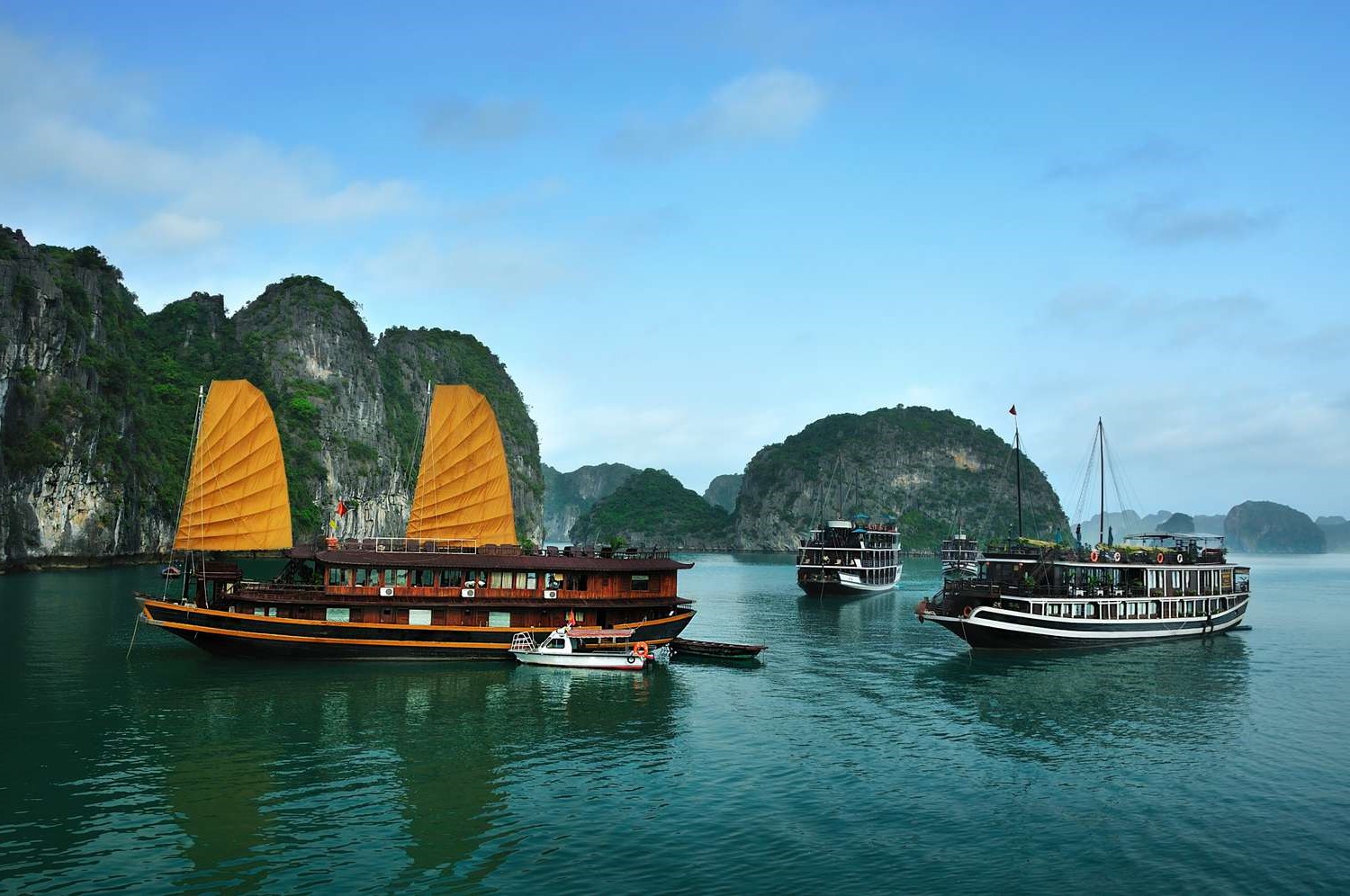
Ever wondered about the hidden gems and untold stories of Vietnam? This Southeast Asian country is more than just its stunning landscapes and rich history. From its unique cultural quirks to surprising facts, Vietnam is a treasure trove of fascinating tidbits. Did you know that Vietnam is the world's largest exporter of cashew nuts? Or that it has a street dedicated entirely to gold trading? These are just the tip of the iceberg! In this blog post, we'll dive into 20 mind-blowing facts about Vietnam that might just make you see this vibrant country in a whole new light. Ready to have your mind expanded? Let's get started on this intriguing adventure through Vietnam's lesser-known facts.
Key Takeaways:
- Vietnam's unique geography, rich history, and vibrant culture make it a fascinating destination with diverse climates, natural wonders, and delicious cuisine.
- Despite its past conflicts and environmental challenges, Vietnam has emerged as a tech-savvy, innovative country, offering both adventure and relaxation for travelers.
Unique Geography of Vietnam
Vietnam, a country with a shape often compared to a dragon, stretches over 1,000 miles from north to south but is only about 30 miles wide at its narrowest point. This unique geography gives Vietnam a diverse climate, ranging from the tropical in the south to the temperate in the north.
-
Vietnam shares borders with China, Laos, and Cambodia, making it a central point in Southeast Asia for cultural exchange and historical conflicts.
-
The country is home to Ha Long Bay, a UNESCO World Heritage Site known for its emerald waters and thousands of towering limestone islands topped with rainforests.
Vietnam's Rich History
Vietnam's history is as complex as its geography, marked by dynasties, wars, and colonialism.
-
Vietnam was under Chinese rule for over a millennium, from 111 BC to AD 938, influencing its culture, language, and political institutions.
-
The Nguyen Dynasty, the last ruling family of Vietnam, ended in 1945 when the Communist Party of Vietnam took control, leading to decades of conflict.
Vibrant Culture and Traditions
Vietnamese culture is a blend of indigenous practices and external influences, mainly from China and France.
-
Tet Nguyen Dan, or the Lunar New Year, is Vietnam's most significant festival, involving family reunions, special foods, and ancestor worship.
-
Traditional Vietnamese music and theater, such as Ca Tru and Water Puppetry, are integral to the country's cultural heritage.
The Culinary Delights of Vietnam
Vietnamese cuisine is renowned worldwide for its flavors, with a balance of salty, sweet, sour, and hot.
-
Pho, a noodle soup with broth, rice noodles, herbs, and meat, is Vietnam's most famous dish, enjoyed at any time of day.
-
Vietnam is the world's second-largest coffee producer, with Vietnamese iced coffee (ca phe sua da) being a popular beverage among locals and tourists alike.
Remarkable Natural Wonders
Vietnam's natural landscape is as diverse as its cultural heritage, offering everything from lush mountains to serene beaches.
-
Son Doong Cave in the Quang Binh province is the world's largest cave, big enough to house a 40-story skyscraper.
-
The Mekong Delta, known as the "Rice Bowl" of Vietnam, is a vast maze of rivers, swamps, and islands, home to floating markets and villages.
Vietnam's Economic Transformation
From a war-torn country, Vietnam has emerged as a rapidly developing economy in Southeast Asia.
-
Since the implementation of Doi Moi (renovation) policies in 1986, Vietnam has shifted from a highly centralized planned economy to a socialist-oriented market economy.
-
Vietnam joined the World Trade Organization (WTO) in 2007, which boosted its economy by promoting foreign trade and investment.
Environmental Challenges and Conservation
Despite its economic growth, Vietnam faces significant environmental challenges, including deforestation, air and water pollution, and biodiversity loss.
-
Vietnam is one of the countries most affected by climate change, with rising sea levels posing a threat to its densely populated coastal regions.
-
Efforts are being made to conserve Vietnam's wildlife, such as the critically endangered Saola, sometimes referred to as the Asian unicorn, discovered in 1992.
The Impact of the Vietnam War
The Vietnam War, a significant event in the 20th century, has left a lasting impact on the country and its people.
-
Agent Orange, a herbicide used by the U.S. military during the war, has caused health problems for millions of Vietnamese people and has led to severe environmental damage.
-
The War Remnants Museum in Ho Chi Minh City is a poignant reminder of the war's brutality and its impact on civilian lives.
Technological Advancements and Innovation
In recent years, Vietnam has made significant strides in technology and innovation, aiming to become a hub for tech startups in Southeast Asia.
-
Ho Chi Minh City is often referred to as the Silicon Valley of Vietnam, with a growing number of tech companies and startups establishing their presence.
-
The government has launched several initiatives to promote digital transformation and to foster an environment conducive to innovation and entrepreneurship.
A Destination for Adventure and Relaxation
Vietnam offers a plethora of options for travelers looking for adventure or relaxation amidst beautiful landscapes.
-
Da Nang is known for its sandy beaches and history as a French colonial port, while Hoi An is famed for its well-preserved Ancient Town, cut through with canals.
-
For adventure seekers, mountain biking in the Hoang Lien Son mountain range or kayaking in Ha Long Bay provides thrilling experiences amidst stunning natural beauty.
A Final Scoop on Vietnam's Hidden Gems
Vietnam, with its rich history, vibrant culture, and breathtaking landscapes, offers a treasure trove of surprises that go beyond the usual tourist spots. From the unique fact that it's the world's largest exporter of cashews to the enchanting beauty of Hang Son Doong, the world's largest cave, this country never ceases to amaze. Whether it's the traditional water puppetry that tells tales of ancient folklore or the bustling streets of Hanoi where history meets modernity, Vietnam is a land of contrasts and discoveries. Remember, the magic of Vietnam isn't just in its well-known landmarks but in the lesser-known facts and hidden corners waiting to be explored. So, next time you're planning an adventure, consider diving deeper into the heart of Vietnam. You're sure to find stories and sights that'll enrich your travel experience beyond imagination.
Frequently Asked Questions
Was this page helpful?
Our commitment to delivering trustworthy and engaging content is at the heart of what we do. Each fact on our site is contributed by real users like you, bringing a wealth of diverse insights and information. To ensure the highest standards of accuracy and reliability, our dedicated editors meticulously review each submission. This process guarantees that the facts we share are not only fascinating but also credible. Trust in our commitment to quality and authenticity as you explore and learn with us.


